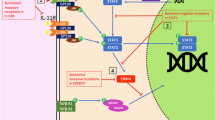Abstract
Interactions of natural killer cell receptors with their cognate ligands play a major role in regulating NK cell function. The NKG2 gene family encodes several highly similar proteins, which are known to form heterodimers with the CD94 receptor. These dimers play a role in the inhibition as well as the activation of NK cells. We have analyzed the gene structures of the NKG2C, D, E, and F genes, and determined their genomic organization. Restriction mapping and sequencing revealed the four genes to be closely linked to one another, and of the same transcriptional orientation. An exon duplication within the NKG2C and E genes was identified, although the duplicated version of this exon has not yet been found in mRNA sequences. The NKG2C, E, and F genes, despite being highly similar, are variable at their 3' ends. We show that NKG2C consists of six exons, whereas NKG2E has seven, and the splice acceptor site for the seventh exon occurs in an Alu repeat. NKG2F consists of only four exons and part of exon IV is in some cases spliced to the 5' end of the NKG2D transcript. NKG2D has only a low similarity to the other NKG2 genes.
Similar content being viewed by others
Author information
Authors and Affiliations
Additional information
Received: 5 February 1998 · Revised: 10 March 1998
Rights and permissions
About this article
Cite this article
Glienke, J., Sobanov, Y., Brostjan, C. et al. The genomic organization of NKG2C, E, F, and D receptor genes in the human natural killer gene complex. Immunogenetics 48, 163–173 (1998). https://doi.org/10.1007/s002510050420
Issue Date:
DOI: https://doi.org/10.1007/s002510050420




